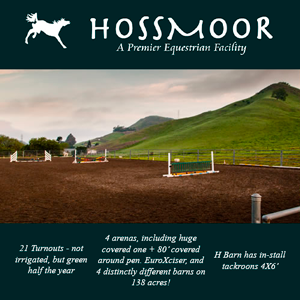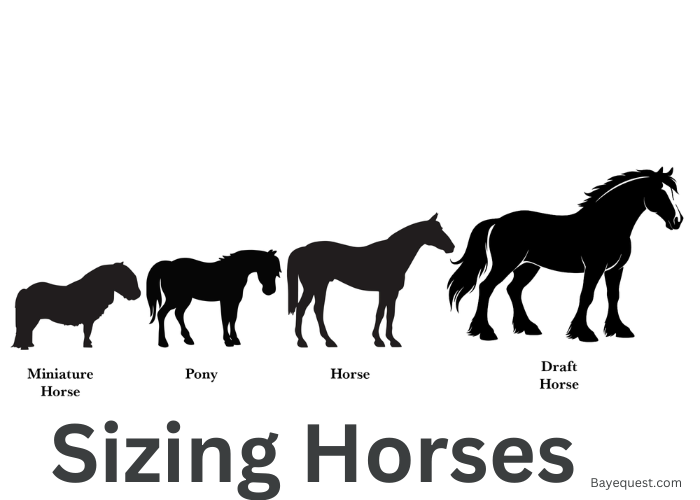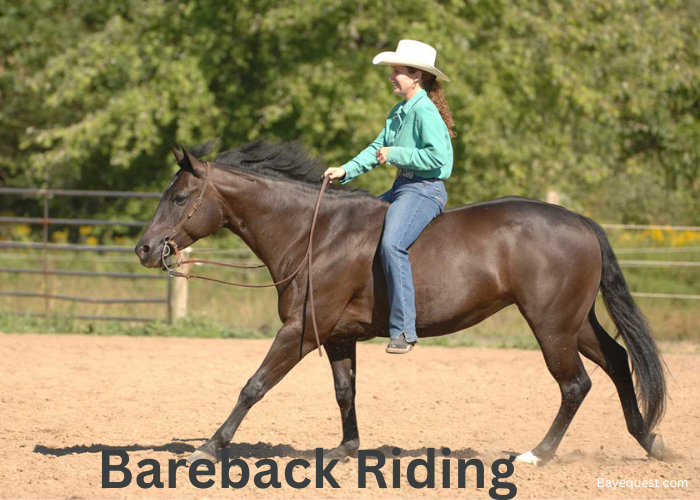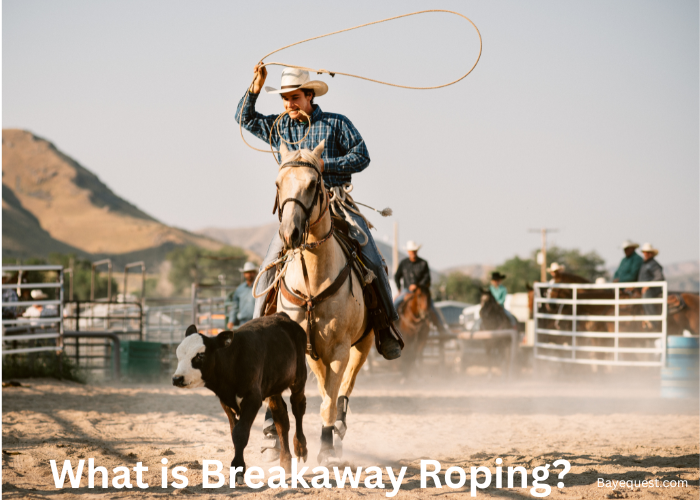Picking the right size horse isn’t just about height. It’s about finding the perfect match for you and the horse.
Whether you’re a seasoned rider or just starting out, understanding sizing can make all the difference.
Too big or too small, and you’ll feel it. We all want that sweet spot where horse and rider are in harmony, right?
In this guide, we’ll discuss everything from weight to conformation, helping you choose a horse that’s just right for your needs.
Ready to find the perfect fit? Let’s get started.
Horse Sizing: Key Takeaway
To size a horse properly, consider the rider’s height and weight, and match it with the horse’s height and weight. Use a size chart to find the ideal fit. For example, a rider under 150 lbs fits well with a horse around 14-15 hands tall. Always measure both for accuracy.
What Does Sizing Horses Mean?
Sizing horses means figuring out the right size of a horse based on its height, weight, body type, and strength.
It helps you match a horse to the right rider and activity. Every horse has a specific build, and you need to choose one that complements the rider’s size and skills.
For example, a taller or heavier rider may need a bigger horse, while a smaller rider might need a pony or a horse with a lighter frame.
Proper sizing also considers the horse’s conformation, which refers to its body shape and structure. This affects the horse’s ability to perform certain tasks, like jumping or running long distances.
By understanding horse sizing, you can make sure the horse stays healthy, comfortable, and capable of performing its job. The right size also makes riding easier and safer for you and the horse.
How to Measure a Horse
Measuring a horse’s height accurately is essential for various activities. Here’s a detailed guide on how to measure a horse:
Tools needed to measure a horse
- Equine height measuring stick
- Height tapes
- Homemade measuring device
- Regular tape measure
Step-by-Step Guide
Prepare the horse
Ensure the horse is standing squarely, with all four feet evenly placed and weight distributed equally.
Allow the horse to stand naturally and relaxed.
Position on level ground
Lead the horse to a smooth, level surface free from debris or uneven areas.
Locate the withers
The withers are the ridge between the shoulder blades and the highest point of the back. This is the standard reference point for measuring height.
Align the measuring tool
Stand beside the horse, aligning the measuring stick or tape measure vertically at the withers.
Ensure the tool is perpendicular to the ground for an accurate reading.
Read the measurement
Note the measurement at the ground level.
If you use a measuring stick marked in hands, the reading will be straightforward. If you use a tape measure, convert inches to hands if necessary (e.g., 60 inches ÷ 4 = 15 hands).
Repeat for accuracy
Measure from both sides of the withers to account for any discrepancies.
Average the two readings if they differ slightly.
Key Factors in Determining Horse Size
Choosing the right horse size is essential for a safe and enjoyable riding experience. The following factors influence this decision:
Rider experience
Your experience as a rider matters a lot. It affects how the horse behaves and performs.
Experienced riders know how to communicate with horses. Their movements are smoother, and horses feel more relaxed and respond better.
New riders may not have the same control. They might confuse or upset the horse without meaning to. This can lead to bad behavior or even injury.
Experienced riders also make better choices. They know which horses fit different riders and situations. This helps avoid stress and keeps the horse safe and happy.
Simply put, the more experience you have as a rider, the better the ride will be for you and the horse.
Discipline and use
The riding discipline affects horse selection.
For example, dressage and eventing often favor horses with certain conformations and movements. Racing requires horses built for speed and endurance.
Aligning horse size and build with the chosen discipline enhances performance and safety.
Age of the horse and the rider
The ages of the horse and rider play a role in sizing.
Young riders or beginners might be more comfortable on smaller, more manageable horses. Conversely, experienced riders might handle larger horses well.
Young horses are still developing physically, and their size and strength may not suit heavy or demanding riders.
Height and weight
A horse’s height is measured from the ground to the highest point of the withers, the ridge between the shoulder blades.
In many English-speaking countries, height is expressed in “hands,” where one hand equals 4 inches. For example, a horse that measures 56 inches tall is 14 hands high, written as 14 hh.
While using a scale provides the most accurate weight measurement, you can estimate a horse’s weight using body measurements.
One common method involves measuring the heart girth and body length. Using these measurements, you can estimate weight using specific formulas or online calculators.
Weight tapes are also available for estimating weight based on heart girth measurements.
However, these are most accurate for horses of average size and may not be reliable for all breeds or body types
Strength
A horse’s physical strength impacts its ability to carry weight and perform tasks. Stronger horses can handle heavier riders and more demanding activities.
Ensure the horse’s strength matches your requirements and promotes safety and longevity in your riding endeavors.
Intended use
Define what you want to do with the horse.
For casual riding, a gentle, well-trained horse suffices. For competitive disciplines like jumping or dressage, select a horse bred and trained for those events.
Align the horse’s abilities with your goals to ensure a fulfilling partnership.
Breed
Different breeds have characteristic sizes and conformations suited to various purposes.
For instance, Thoroughbreds are taller and leaner, making them suitable for racing. Clydesdales are larger and more muscular, ideal for heavy draft work.
Understanding breed traits helps in selecting a horse that meets specific size and performance criteria.
Conformation
Conformation refers to the horse’s physical structure and alignment. This affects its movement, strength, and suitability for certain tasks.
Horses with well-proportioned bodies, straight legs, and balanced musculature are more likely to perform well and remain sound.
For example, a horse with a narrow chest may have limited lung capacity, affecting endurance. A well-sprung ribcage allows for better respiration and stamina.
Common Mistakes in Horse Sizing
Here are some common mistakes people make when sizing horses:
Choosing by height alone
Many people focus only on how tall the horse is. But height isn’t everything.
A short horse can be strong and sturdy. A tall horse may not be able to carry heavy riders. Always look at the horse’s build too.
Ignoring the rider’s weight
Some riders think only their height matters. Weight is just as important.
A horse can only carry a certain amount of weight comfortably. Too much weight can hurt the horse’s back and joints.
Overestimating the rider’s skill
Beginners sometimes choose big or powerful horses. That can be dangerous.
It’s better to start with a calm, well-trained horse that matches the rider’s experience.
Not considering the horse’s strength
A tall horse may look impressive, but it also needs to be strong. Size doesn’t always mean power.
Check if the horse has the muscle to carry the rider and do the job needed.
Using the wrong equipment
Using saddles and tack made for horses of a different size can cause pain or injury. Make sure the gear fits both the horse and the rider properly.
Choosing a horse for the wrong job
Some horses are great for trail riding but not good for jumping. Others are fast but not strong.
Always match the horse’s ability to the work you want it to do.
Forgetting the rider’s growth
This is common with kids as they grow fast. A pony that fits now may be too small in a year.
Think ahead when sizing a horse for a growing rider.
What Do The Sizes Mean on Our Size Charts?
When you look at a size chart, you’ll see labels like Mini A, Pony, Cob, or Horse. These names help match the right gear to your horse or pony based on size, shape, and build.
But these sizes are only a starting point. Because horses come in all shapes, even at the same height.
So, you need to measure your horse to get the best fit.
What each size means
- Mini A / Mini Medium – For very small miniature horses under 34 inches tall.
- Mini B / Mini Large – For minis between 34 and 38 inches tall.
- Mini C / Mini X-Large – For taller or stockier minis (up to 40 inches tall).
- Small Pony / X-Small – For ponies between 40–44 inches tall, like Shetlands.
- Pony / Small – For ponies that are too big for mini sizes, but too small for horse gear (44–50 inches).
- Cob / Medium – For smaller horses like Arabians, Welsh Cobs, and some Quarter Horses.
- Horse / Large to X-Large – For most average-sized horses (around 15–16.2 hands).
- Large Horse / XX-Large – For bigger horses, like Warmbloods or draft crosses.
- Draft Horse / XXX-Large – For full-size draft horses with big heads and wide bodies.
How to Calculate the Ideal Size Range Without a Horse in Mind
Sometimes you need to buy horse tack or plan for a horse before actually having one. This can happen when you are preparing for lessons, starting a riding program, or buying a gift.
The good news is you can still estimate a good size range using rider details and basic math.
Start by thinking about the rider. Their height, weight, and experience level all matter.
A small child doesn’t need a full-sized horse. A heavy adult needs a strong horse with enough bone and muscle to carry them safely.
A general rule is that a horse should carry no more than 20% of the rider’s weight, including tack.
Let’s say the rider weighs 150 pounds. Most saddles weigh about 20 pounds. That’s 170 pounds total. Multiply 170 by 5. That gives you 850 pounds.
So, you’ll need a horse that weighs at least 850 pounds. For comfort and strength, go higher, so a horse weighing 900 to 1,000 pounds would be a better fit.
Next, consider the horse’s height. Average horses are measured in “hands” (one hand = 4 inches).
A horse around 15 to 16 hands high is usually a good match for adult riders. Smaller horses and ponies (under 14.2 hands) are better for kids.
A tall, long-legged rider may also need a taller horse for better balance and comfort.
Think about what the horse will be doing. A horse for trail riding doesn’t need to be very tall, but a jumper or sport horse may need extra height and strength.
If you plan to work with calm, easygoing horses, you might choose cob or horse sizes. If the work is heavy, like pulling carts, you should choose large horse or draft sizes.
Breed expectations also help. Arabians, for example, are lighter and smaller but can carry weight well. Warmbloods are bigger and stronger.
If you expect to work with Quarter Horses, you might need tack in Cob or Horse sizes. For Shetlands or minis, you’ll need much smaller gear.
You can use this size chart below to match these estimates. Look at the rider’s build, the kind of horse you expect, and the horse’s likely weight and height.
| Rider type | Likely horse size | Chart size |
| Small child | Mini / Small Pony | Mini, X-Small |
| Older child/teen | Pony or cob | Small/medium |
| Average adult | Horse (15–16.2hh) | Large |
| Tall/heavy adult | Large Horse or Draft | X-Large/XXL |
How to Calculate the Ideal Size Range With a Horse in Mind
If you already have a horse, finding the right size becomes much easier. You can measure your horse directly and match those numbers to size charts.
This helps avoid guessing and ensures the tack or clothing you buy will fit well.
Start by measuring your horse’s height. Use a horse measuring stick or a standard measuring tape. Horses are measured in “hands,” where one hand equals four inches.
Measure from the ground up to the highest point of the withers. For example, if your horse stands 60 inches tall at the withers, divide that by 4. That gives you 15 hands high (15hh).
Next, measure your horse’s weight. If you don’t have access to a scale, use a weight tape. Wrap the tape around the horse’s girth, just behind the front legs.
This will give you a good estimate of the horse’s weight. You can also use the formula:
Weight (lbs) = (Heart girth² × body length) ÷ 330
Make sure to measure the heart girth (in inches) and the body length (from the point of the shoulder to the point of the buttock).
Square the girth measurement, multiply by the length, and then divide by 330.
Once you have the height and weight, consider your horse’s build. Is it slim and narrow or thick and stocky?
Two horses can be the same height but need different gear sizes because of their shape. A tall, lean Thoroughbred might need a different size than a short but wide Quarter Horse.
You should also look at the head size and leg length. These parts matter a lot if you’re buying a halter, bridle, or boots. For headgear, take simple measurements around the noseband, poll, and throatlatch.
For boots or leg wraps, measure the length of the cannon bone and the circumference of the leg.
Now compare your measurements to this:
- A horse that is 14.2 hands and around 850–950 lbs falls into cob size.
- A horse that is 15.2–16 hands and weighs 1,000–1,200 lbs will likely fit a horse or full size.
- Larger horses over 16.2 hands and 1,400+ lbs will need oversize or draft size gear.
Also, check for adjustable gear. Even when the size is right, slight changes in fit may still be needed depending on the brand or cut of the item.
Horse Rider Weight and Height Chart
Here’s a clear chart that matches riders with horses based on height and weight for optimal fit:
| Rider’s height | Rider’s weight | Horse Height (Hands) | Horse Type/Size | Recommended Horse Weight |
| Under 4’6″ | Under 50 lbs | Mini A (up to 34″) | Mini | Under 300 lbs |
| Under 4’6″ | 50–75 lbs | Mini A–B (up to 38″) | Mini/Small Pony | 300–500 lbs |
| 4’6″–5’0″ | 75–100 lbs | Mini B–C (33–40″) | Small Pony/Pony | 500–700 lbs |
| 5’0″–5’4″ | 100–125 lbs | Pony (40–50″) | Pony | 700–900 lbs |
| 5’4″–5’6″ | 125–150 lbs | Horse (14–15 hh) | Horse | 900–1,100 lbs |
| 5’6″–6’0″ | 150–180 lbs | Horse (15–16 hh) | Horse | 1,100–1,300 lbs |
| 5’10″–6’2″ | 180–210 lbs | Large Horse (16–16.2 hh) | Large horse | 1,300–1,500 lbs |
| 6’2″ and above | 210+ lbs | Large Horse (16+ hh) | Large Horse/Draft | 1,500+ lbs |
Sizing Horses: Conclusion
In conclusion, sizing horses correctly is key for both the rider’s comfort and the horse’s well-being.
You can find the best fit by considering factors like rider size, experience, and the horse’s height, weight, and breed.
Always measure your horse and rider for accurate sizing. Using size charts and guidelines will help, but make sure to adjust based on individual needs.
Proper sizing ensures safer, more enjoyable rides for everyone involved. So, take the time to choose the right size, and both horse and rider will benefit.








